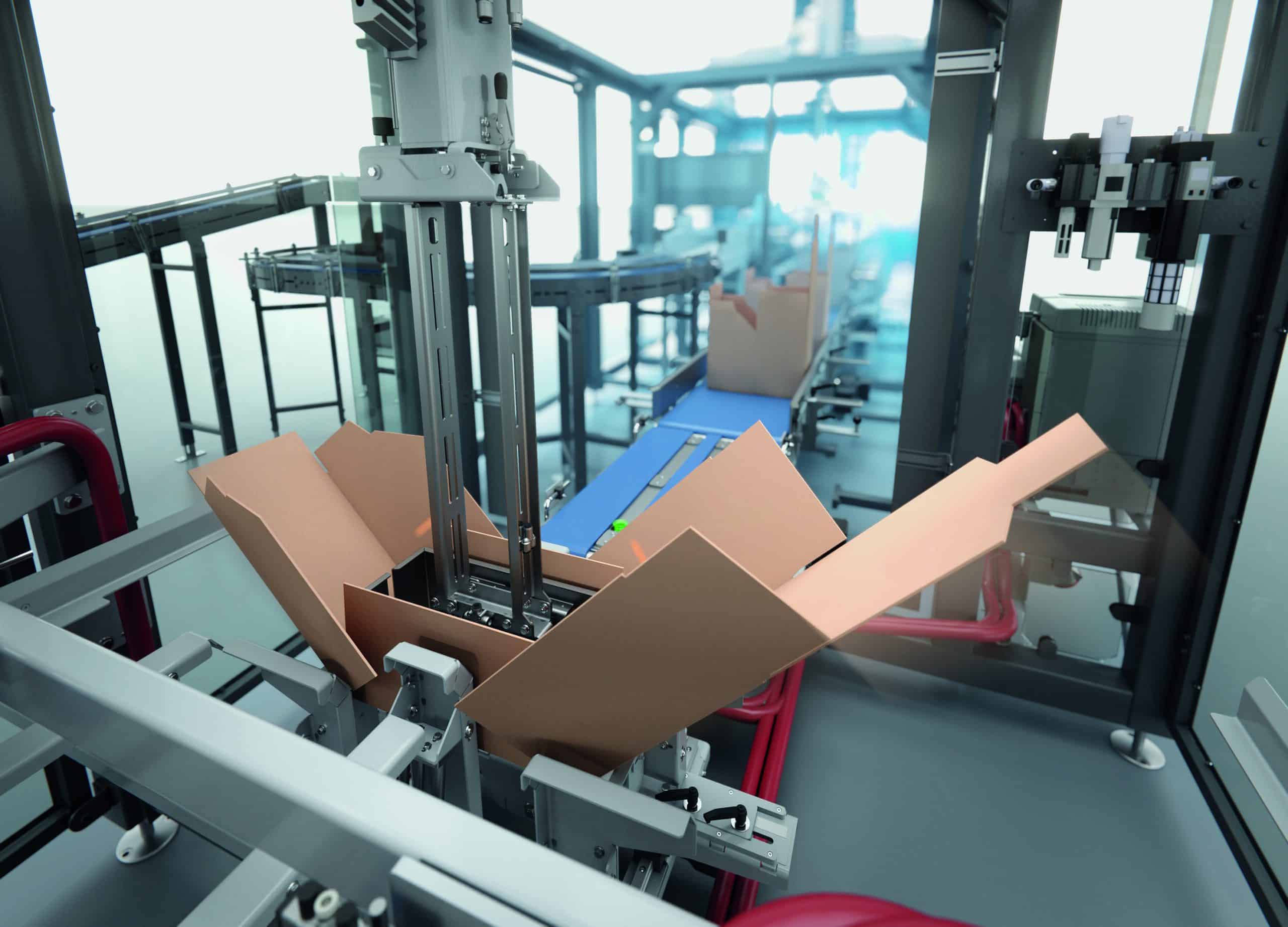Live at interpack: (De-)palletizing competence
At interpack, the TRAPO team will be demonstrating live in Hall 12, Stand A65 a circuit between two articulated robots which – equipped with gripper expertise – palletize and depalletize cardboard boxes of different sizes. The perfect cooperation is perfectly complemented by conveyor technology on two levels and the TRAPO Pack software.
TRAPO’s own software is the basis for efficient palletizing under high performance. In an automated environment, TRAPO Pack configures the optimum layer pattern from the dimensions of the package and the pallet. The configuration allows any layer patterns – for perfect stacking as the basis of stable shipping units.
The generated layer patterns are used for subsequent (de)palletizing processes. TRAPO Pack protects the environment: palletizing performance requires less energy input and reduces material consumption.
Partner of the packaging industry
Picking, case packing, conveying, (de)palletizing, load securing, shuttle transport, warehouse logistics and autonomous truck loading: The TRAPO portfolio offers safe, forward-looking solutions for the individual needs of the packaging industry.
Short decision-making processes and high quality characterize the TRAPO profile: 1 System I 1 Control – hardware and software for machines and systems come from a single source and are manufactured 100% in-house. The customer always has a fixed contact person, but benefits from the knowledge of all specialist teams.
Conventional or customized palletizing?
In addition to conventional solutions with jointed-arm and gantry robots, we will be providing information at interpack about our flagship, the HLP 6000 high-performance layer palletizer, which can be customized to fit into its environment.
Info on innovative customer solutions in the TRAPO Lounge
At interpack, the TRAPO team will answer all detailed questions about the overall portfolio. In order to provide the international trade audience with far-reaching answers, “TRAPO Hubs” will be equipped with monitors in order to explain outstanding features in a personal conversation using both film sequences from practice and with the help of animations and application examples.
